 W
WThe Age of the Pussyfoot is a science fiction novel by American writer Frederik Pohl, first published as a serial in Galaxy Science Fiction in three parts, starting in October 1966. It was later published as a standalone novel in 1969.
 W
WThe Anti-Death League is a 1966 novel by English author Kingsley Amis (1922–1995). Set in England, it follows the lives of characters working in and around a fictional British Army camp where a secret weapon is being tested.
 W
WBabel-17 is a 1966 science fiction novel by American writer Samuel R. Delany in which the Sapir–Whorf hypothesis plays an important part. It was joint winner of the Nebula Award for Best Novel in 1967 and was also nominated for the Hugo Award for Best Novel in 1967.
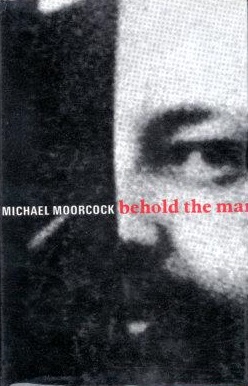 W
WBehold the Man (1969) is a science fiction novel by British writer Michael Moorcock. It originally appeared as a novella in a 1966 issue of New Worlds; later, Moorcock produced an expanded version which was first published in 1969 by Allison & Busby. The title derives from the Gospel of John, Chapter 19, Verse 5: "Then Jesus came out, wearing the crown of thorns and the purple robe. And Pilate said to them Behold the Man."
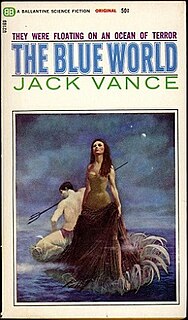 W
WThe Blue World is a science fiction adventure novel by American writer Jack Vance. The novel is based on Vance’s earlier novella "The Kragen", which appeared in the July 1964 edition of Fantastic Stories of Imagination.
 W
WColossus is a 1966 science fiction novel by British author Dennis Feltham Jones, about super-computers taking control of mankind. Two sequels, The Fall of Colossus (1974) and Colossus and the Crab (1977) continued the story. Colossus was adapted as the feature film Colossus: The Forbin Project (1970).
 W
WThe Crack in Space is a 1966 science fiction novel by American writer Philip K. Dick. In the United Kingdom, it has been published under the title of the original novella, Cantata 140, published in the July 1964 issue of The Magazine of Fantasy & Science Fiction. This original title refers to the short title in English, Sleepers Awake, of J.S. Bach's Cantata BWV 140 and the novel's 'bibs', the millions sleeping in suspended animation. Both are based on the short story Prominent Author. The common elements are the Jiffi-scuttler transport device, the company, Terran Development, that manufactures it, and a brief summary of Prominent Author as an event of the past in chapter 2. The "crack in space" is a defect in Jiffi-scuttler operation that allows access to the earth and to parallel earths at various times and locations, beyond its intended use of providing near-instant transport between specific locations on the earth in the present.
 W
WThe Crystal World is a science fiction novel by English author J. G. Ballard, published in 1966.
 W
WThe Eyes of the Overworld is a fantasy fix-up novel by American writer Jack Vance, published by Ace in 1966, the second book in the Dying Earth series that Vance inaugurated in 1950. Retitled Cugel the Clever in its Vance Integral Edition (2005), the book features the self-proclaimed Cugel the Clever in linked stories.
 W
WFalcons of Narabedla is a science fiction novel by American writer Marion Zimmer Bradley set in the universe of her Darkover series. It was first published in book form in English by Ace Books in 1964, as an Ace Double with Bradley's collection The Dark Intruder and Other Stories on the other side. The story first appeared in the May 1957 issue of the magazine Other Worlds.
 W
WFantastic Voyage is a 1966 American submarine science-fiction film directed by Richard Fleischer and written by Harry Kleiner, based on a story by Otto Klement and Jerome Bixby. The film is about a submarine crew who are shrunk to microscopic size and venture into the body of an injured scientist to repair damage to his brain. Kleiner abandoned all but the concept of miniaturization and added a Cold War element. The film starred Stephen Boyd, Raquel Welch, Edmond O'Brien, Donald Pleasence, and Arthur Kennedy.
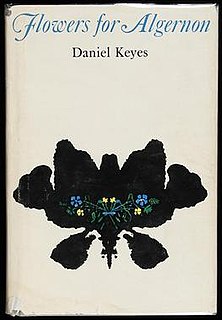 W
WFlowers for Algernon is the title of a science fiction short story and a novel by American writer Daniel Keyes. The short story, written in 1958 and first published in the April 1959 issue of The Magazine of Fantasy & Science Fiction, won the Hugo Award for Best Short Story in 1960. The novel was published in 1966 and was joint winner of that year's Nebula Award for Best Novel.
 W
WSibyl Sue Blue, better known under its paperback title, Galactic Sibyl Sue Blue, is a science fiction detective novel by Rosel George Brown, originally published in hardcover by Doubleday in 1966. The retitled paperback reprint appeared from Berkley Books in 1968. A German translation, Die Plasmagötter, followed in 1971.
 W
WThe Gate of Time is an alternate history novel by American writer Philip José Farmer. It was first published in paperback editions by Belmont Books in the United States in October 1966 and by Quartet in the United Kingdom in September 1974. Later it was revised and expanded as Two Hawks from Earth, in which form it was first published, also in paperback by Ace Books, in May 1979. This edition was reprinted by Berkley Books in July 1985. A trade paperback edition was published by MonkeyBrain Books with a new afterword by Christopher Paul Carey in May 2009.
 W
WGiles Goat-Boy (1966) is the fourth novel by American writer John Barth. It is metafictional comic novel in which the universe is portrayed as a university campus in an elaborate allegory of both the hero's journey and the Cold War. Its title character is a human boy raised as a goat, who comes to believe he is the Grand Tutor, the predicted Messiah. The book was a surprise bestseller for the previously obscure Barth, and in the 1960s had a cult status. It marks Barth's leap into American postmodern fabulism.
 W
WHumans as Gods is a 1966–1977 science fiction trilogy by Soviet author Sergey Snegov. Despite being initially intended as a parody on space opera, mythological and religious cliché, the novels embody a complex set of ideas on the fundamental principles of the world's structure and development, and the directions of the civilizations' possible future. While a number of plot elements seem to be taken from general science fiction concepts, the resulting story may be considered unique in many ways. The central conflicts are based on the assumption that the face of super-civilization must be defined by its comprehension of the Universe as a whole: the understanding of its elementary, most basic laws.
 W
WMake Room! Make Room! is a 1966 science fiction novel written by Harry Harrison exploring the consequences of unchecked population growth on society. It was originally serialized in Impulse magazine.
 W
WThe Moon Is a Harsh Mistress is a 1966 science fiction novel by American writer Robert A. Heinlein about a lunar colony's revolt against absentee rule from Earth. The novel expresses and discusses libertarian ideals. It is respected for its credible presentation of a comprehensively imagined future human society on both the Earth and the Moon. Originally serialized monthly in Worlds of If, the book was nominated for the Nebula Award in 1966 and received the Hugo Award for Best Novel in 1967.
 W
WNight of Light is a science fiction novel by American writer Philip José Farmer. A shorter version was published in June 1957 in The Magazine of Fantasy & Science Fiction. The expanded version was first published in 1966 by Berkley Medallion with copyright reserved to the author. It has been recently reprinted by Subterranean Press in the collection The Other in the Mirror. It has been cited as an influence on the Jimi Hendrix psychedelic rock song "Purple Haze" (1967).
 W
WNow Wait for Last Year is a 1966 science fiction novel by American writer Philip K. Dick. It is set in 2055, when Earth is caught between two galactic powers in an interstellar conflict. Dr. Eric Sweetscent and his wife Kathy get addicted to a powerful drug that appears to cause time travel. The doctor's patient is the world leader, UN Secretary General. Of the twenty-eight novels Dick published in the 1960s and 1970s, this novel is one of the five chosen to represent this period of his career in The Library of America series, Volume Two.
 W
WOctober the First is Too Late is a science fiction novel by astrophysicist Fred Hoyle. It was first published in 1966.
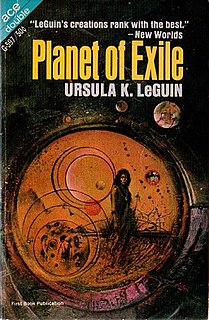 W
WPlanet of Exile is a 1966 science fiction novel by American writer Ursula K. Le Guin, part of her Hainish Cycle. It was first published as an Ace Double following the tête-bêche format, bundled with Mankind Under the Leash by Thomas M. Disch. In 2017, the rights for a movie were acquired by Los Angeles Media Fund.
 W
WThe Productions of Time is a science fiction novel by English writer John Brunner, first published in The Magazine of Fantasy and Science Fiction in 1966. It appeared in book form the following year, published by Signet Books.
 W
WRocannon's World is a science fiction novel by American writer Ursula K. Le Guin, her literary debut. It was published in 1966 as an Ace Double, along with Avram Davidson's The Kar-Chee Reign, following the tête-bêche format. Though it is one of Le Guin's many works set in the universe of the technological Hainish Cycle, the story itself has many elements of heroic fantasy. The hero Gaveral Rocannon encounters lords who live in castles and wield swords, and other races much like fairies and gnomes, in his travels on a backward planet.
 W
WThe Solarians is a science fiction novel by American writer Norman Spinrad. It was first published in 1966. It was Spinrad's first published novel.
 W
WTunnel Through Time is a 1966 science fiction novel written by Paul W. Fairman under American science fiction and fantasy author Lester Del Rey's byline. It is a children's time travel adventure.
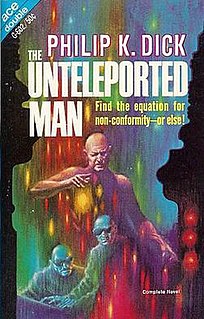 W
WThe Unteleported Man is a 1966 science fiction novel by American writer Philip K. Dick, first published as a novella in 1964. It is about a future in which a one-way teleportation technology enables 40 million people to emigrate to a colony named Whale's Mouth on an Earth-like planet, which advertisements show as a lush green utopia. When the owner of a failing spaceship travel firm tries to take the 18-year flight to the colony to bring back any unhappy colonists, powerful forces try to stop him from finding out the truth.
 W
WThe Watch Below (1966) is a science fiction novel by British writer James White about a colony of humans stranded underwater in a sunken ship, who survive by air pockets, and a water-breathing alien species in search of a new home. The two generation ships encounter each other in the Earth's ocean.
 W
WThe Witches of Karres is a space opera novel by James H. Schmitz. It deals with a young space ship captain who finds himself increasingly embroiled in wild adventures involving interdimensional alien invaders, space pirates, and magic power. The story is unrelated to the "Hub" series of stories by Schmitz.
 W
WWorld of Ptavvs is a science fiction novel by American writer Larry Niven, first published in 1966 and set in his Known Space universe. It was Niven's first published novel and is based on a 1965 magazine story of the same name.